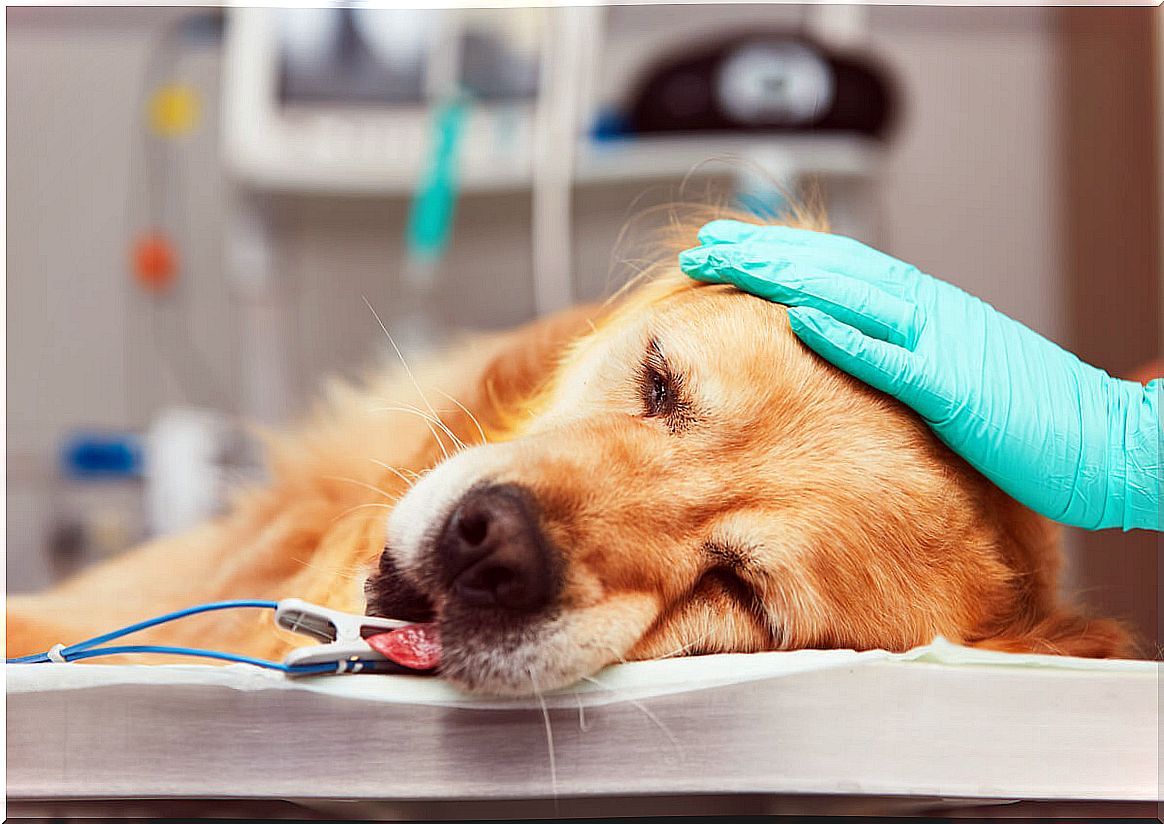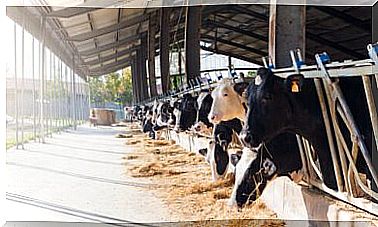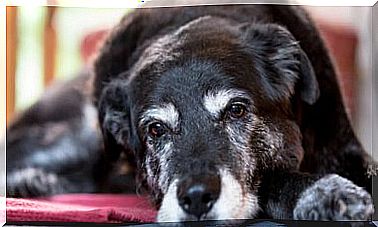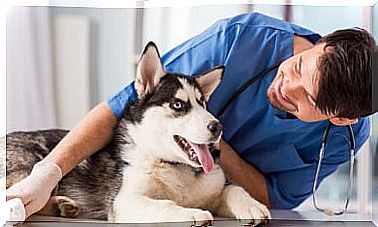Cancer In The Golden Retriever: An Emerging Problem

Cancer in the golden retriever is a health problem that has vets, researchers, and guardians alike concerned. It is an increasingly prevalent disease in this breed, since, without going any further, approximately 70% of dogs of this variety die from 2 types of neoplasia: hemangiosarcoma and lymphoma.
The average age of death for these animals is about 9.5 years, in part due to the slow but lethal action of malignant tumors. What is the cause of these worrisome data? If you want to know everything about cancer in the golden retriever , read on.
Causes of cancer in the golden retriever
Let’s start with the basics. The term cancer refers to a group of diseases caused by the abnormal growth of a group of cells. This is due to genetic mutations that disrupt normal cell cycles, causing them to divide uncontrollably and end up affecting other tissues.
When cells grow out of control, the dreaded malignant tumors appear. If these mutated cell lines enter the blood or lymphatic stream and settle on other organs, metastasis occurs. This definition of cancer is universal, whether we are talking about humans, elephants or golden retrievers .
In the case of the race that concerns us here, the causal agents are not fully known. What is clear is that it is a genetic issue, since the prevalence of neoplasms in other dogs is 20%, while in these dogs it reaches 60%.
Although no specific cause has been found, multiple studies have linked cancers in the breed to heredity. Chromosomal aberrations and gene changes such as VEGFR1 appear to be linked to cancer in the golden retriever.

Types of cancer in the golden retriever
As we have said before, up to 7 out of 10 dogs of this breed are at risk of cancer in their lifetime. This probability is more skewed in males (66%) than in females (57%), as is the case in humans.
The most common histological diagnosis in deceased dogs agrees that, in most cases, 2 types of neoplasms are prevalent: hemangiosarcomas and lymphomas. We tell you its peculiarities in the following lines.
1. Hemangiosarcoma
Approximately 23% of golden retrievers die from this neoplasm. It is a highly malignant tumor that sits in any vascular bed, that is, in veins, arteries and blood capillaries. Because these systems run throughout the animal’s body, tumors can occur almost anywhere.
Detection of this type of cancer can be very difficult, unless it is located in a superficial vessel. If so, the dog will present a mass under the skin, which facilitates early suspicions. In internalized tumors, the animal continually loses blood, so the most common symptoms are tiredness, fatigue, and pale gums.
After diagnosis at the vet, surgery and subsequent chemotherapy are the only possible treatments. Still, the prognosis is not positive at all. Sun 10% of dogs live one year after the relevant detection and treatment.
2. Lymphoma
It is the cause of approximately 18.5% of deaths in the golden retriever. This type of cancer affects the lymphatic system and lymph nodes and, in addition, it can appear localized or in a general way. There are almost 30 types of canine lymphomas, so we are not going to dwell long on their clinical peculiarities.
In any case, it is necessary to know that the most common type of lymphoma in dogs is multicentric. This accounts for up to 85% of all cases and is characterized by inflammation of the animal’s lymph nodes.

What to do to avoid cancer in the golden retriever?
Unfortunately, the tutor cannot do anything. The responsibility today falls on researchers and breeders alike, since only professionals will be able to discover the genes that cause these serious pathologies. Once identified, all mutation-bearing specimens must be isolated and prevented from reproducing.
Only in this way, throughout the generations, will it be possible to clean the genetics of the breed of carcinogenic mutations. Unfortunately, there is still a long way to go to get to that point at the level of scientific knowledge.









